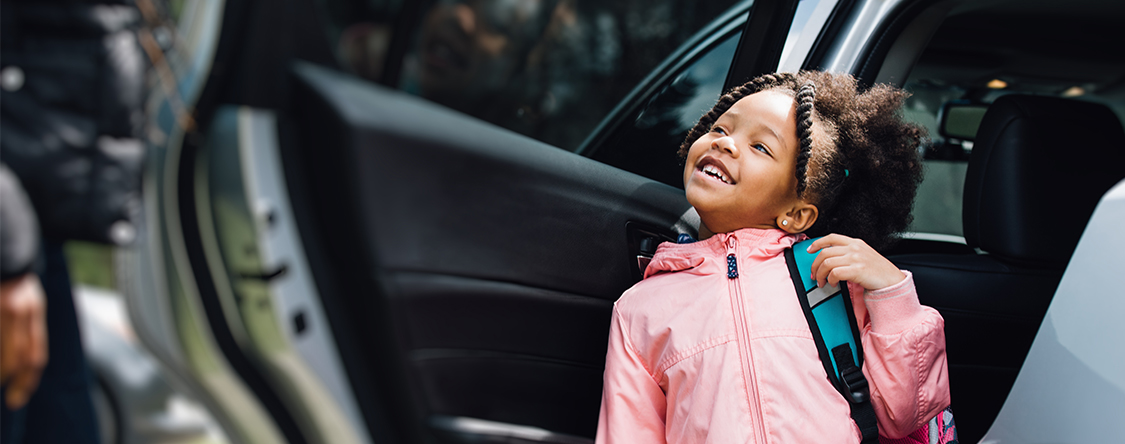Research In Action
Research In Action
Breadcrumb

This past fall, I had the pleasure to participate, for the second time, in a biennial workshop in Sweden at which international experts in child occupant protection, epidemiology, human behavior, biomechanics, automotive safety, and child seat design met to brainstorm about current and new challenges in protection of children in vehicles. The workshop was co-organized by CIRP’s Kristy Arbogast, John H. Bolte IV of The Ohio State University, Jessica Jermakian of the Insurance Institute for Highway Safety and Swedish experts from Volvo Cars and SAFER, the Vehicle and Traffic Safety Centre at Chalmers University. Our discussion and findings during this meeting resulted in a presentation held at the Protection of Children in Cars Conference in Munich, Germany in December 2022.
Challenges with Future Mobility Modes
The goal for this year’s workshop was to understand the challenges facing children and adolescents in mobility modes outside the traditional personal vehicle, such car sharing services and autonomous vehicles. Popular press portrays a future era of autonomous driving where vehicle occupants can engage in different tasks as the vehicle drives itself, but there has been little consideration for how these new mobility scenarios will affect younger occupants.
To guide our discussion, we started with the following questions:
- What strategies can further reduce the burden of motor vehicles crash deaths and injuries for children/adolescents?
- How can we guide future restraint development to help protect children/adolescents in shared and other future mobility scenarios while still ensuring protection in more traditional riding scenarios?
We chose to focus our discussion on booster seated age children as they rely on both an add-on restraint and the vehicle restraint system. Four themes emerged as priorities for future booster design: safety, accessibility, affordability, and sustainability.
Safety: The key safety concept that emerged from our discussion was that the child booster is an adapter, not a stand-alone restraint. This definition changes how stakeholders – consumers/parents, vehicle and restraint manufacturers, regulatory and consumer information programs -- use, design and evaluate the boosters. The booster adapts the vehicle restraint system to the child occupant so that: 1) the child is raised to position the lap seatbelt on the bony parts of the pelvis, 2) the higher position of the child helps to keep the shoulder seatbelt mid-positioned on the shoulder of the child, and 3) the surface the child sits on is shorter than the vehicle seat allowing the child to bend their knee comfortably over the edge of the booster. These safety characteristics of the booster prevent children from slouching and sliding under the lap belt in the event of a crash (i.e. submarining).
Boosters continue to develop and improve and so should the tools that we use to realistically evaluate their performance to ensure modern representation of the vehicle interior. Furthermore, current evaluation vehicle restraint performance in novel seating configurations (e.g. reclined seats) has focused on adult occupant protection. How the booster “adapter” provides protection in these future scenarios must be evaluated.
Accessibility: Studies show that in the United States, parents restrain their children aged five years and younger differently when traveling in a rideshare vehicle. Parents were most likely to report that they did not use a child restraint while traveling in a rideshare vehicle because: there was no restraint in the rideshare vehicle, they did not have a child restraint with them, or the trip was a ‘short distance’. The continuous evolution of shared mobility options needs to concurrently drive and account for the development of new child booster solutions that help ensure the use of a booster on every stage of a trip.
Affordability: Limiting features that do not promote safety will benefit consumers through ease of use and reduced misuse. Adding weight and complexity do not necessarily increase safety; for example, the booster cushion (or backless booster) is a simple adapter but still effective.
To decrease economic disparities, efforts should be placed on ensuring that there are boosters that perform well across price ranges.
Sustainability: Families may choose not to own vehicles or child restraints – practically resulting in an increase in the number of transportation modes during one trip; e.g. using cars for only part of the trip in concert with other public transportation modes. However, households with children in low- and mid-income households were found to be less likely to use car sharing and ride-sourcing mobility. Different economic models for obtaining child restraints and boosters may be necessary as families choose a more minimalist approach.
Sustainability goals also encourage streamlined vehicle designs with reductions in space between the outboard rear seat passenger’s head and the vehicle side. This leads to a poor fit with a large booster (with a back) due to its large head side supports; in contrast, a booster cushion that can fit would be of increased importance for modern streamlined vehicles.
A Common Vision
Our discussion at the workshop concluded by recognizing that in order to have safe shared mobility, enabling a more sustainable and accessible traffic scenario is a collaborative task by all involved stakeholders: vehicle manufacturers, booster manufacturers, users, and rulemaking and organizations influencing the design, such as consumer information testing programs. We need to work together and be aligned towards the common goal of sustainable and safe transportation.



